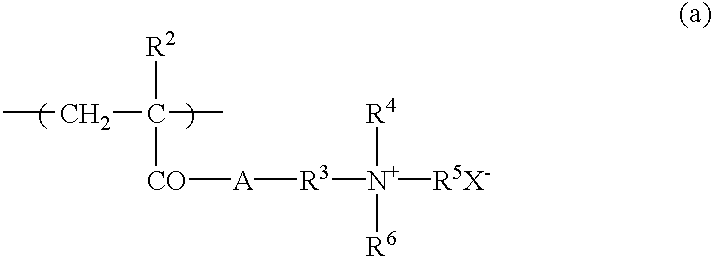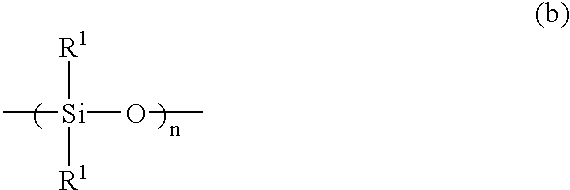Polyester film
a polymer film and polymer technology, applied in the field of polymer film, can solve the problems of poor handling quality, deformation of protective film, slippage, etc., and achieve the effects of preventing deposition of adhesives, excellent antistatic properties, and good handling quality
- Summary
- Abstract
- Description
- Claims
- Application Information
AI Technical Summary
Benefits of technology
Problems solved by technology
Method used
Image
Examples
preparation example 1 (
POLYESTER A)
[0165]100 parts of dimethyl terephthalate, 60 parts of ethylene glycol and 0.09 part of magnesium acetate tetrahydrate were heated in a reactor to carry out an ester exchange reaction while distilling away methanol. The mixture was heated to 230° C. in 4 hours from start of the reaction to substantially complete the ester exchange reaction. Then an ethylene glycol slurry containing 0.1 part of silica particles having an average size of 1.54 μm was added to the reaction system, after which 0.04 part of ethyl acid phosphate and 0.01 part of germanium oxide were further added, with the temperature reaching 280° C. and the pressure 15 mmHg in 100 minutes. Pressure was still reduced gradually thereafter to finally reach 0.3 mmHg. 4 hours later, the reaction system was returned to normal pressure to obtain polyester A. The content of silica particles in polyester A was 0.1% by weight.
preparation example 2 (
POLYESTER FILM A1)
[0166]Polyester A was dried in an inert gas atmosphere at 180° C.for 4 hours, melt extruded from a melt extruder at 290° C., and cooled and solidified on a cooling roll with its surface temperature set at 40° C. by making use of the electrostatic pinning method to obtain a non-stretched sheet. This sheet was stretched 3.5 times in the machine direction at 85° C., then stretched 3.7 times in the transverse direction at 100° C. and then heat set at 230° C. to obtain a polyester film A1 having a thickness of 38 μm.
preparation example 3 (
POLYESTER FILM A2)
[0167]A polyester film A2 having a thickness of 25 μm was obtained in the same way as in Preparation Example 2.
PUM
| Property | Measurement | Unit |
|---|---|---|
| Thickness | aaaaa | aaaaa |
| Percent by mass | aaaaa | aaaaa |
| Percent by mass | aaaaa | aaaaa |
Abstract
Description
Claims
Application Information
 Login to View More
Login to View More - R&D
- Intellectual Property
- Life Sciences
- Materials
- Tech Scout
- Unparalleled Data Quality
- Higher Quality Content
- 60% Fewer Hallucinations
Browse by: Latest US Patents, China's latest patents, Technical Efficacy Thesaurus, Application Domain, Technology Topic, Popular Technical Reports.
© 2025 PatSnap. All rights reserved.Legal|Privacy policy|Modern Slavery Act Transparency Statement|Sitemap|About US| Contact US: help@patsnap.com



